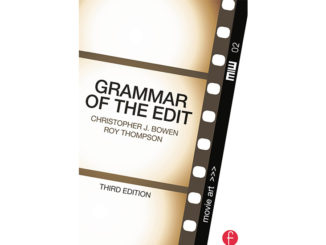
By Isabel Yanes
(Inhaling deeply) Ahhh, awards season. Can’t you just smell the red carpet, hear the camera shutters, and imagine holding that statue in your hands?
Soon, people of all crafts will be recognized for their artistic and technical merit as another movie awards season gets under way. Albeit some may have their speeches edited out of the programming, but who’s really paying attention to those categories anyway, right? Before these nationwide televised events air, however, a lot of time, money, and effort goes into promoting the multitude of nominations we see on the screen. Unfortunately for the planet and our mailboxes, this has historically meant DVD screeners – a LOT of them.
It’s nice to have that kind of promotion behind our work, but this avalanche of screeners creates a lot of waste. There is a better way – and MPEG members can do their part to lead the change.
Movie promotion has come a long way since the first film award advertisement was released by MGM in 1935 for “Ah, Wilderness.” It wasn’t until the late 1940s that “for your consideration” (FYC) promotional campaigns took flight and proved to be successful in gaining nominations. The following decades saw a rise in campaigns for noteworthy productions, but tactics became more elaborate in the form of dinner parties, coffee table books, and more. Though many of those practices stopped after they received criticism for blatantly trying to buy votes, sending out video cassettes and the successive DVDs became common practice.
As television entered its “peak” at the turn of the century, and streaming platforms entered the competition seeking Emmys, campaigns once again ballooned out of control, with Netflix and Amazon opening lavish exhibits that were separate from the Academy’s facilitated events. An abhorrent amount of screeners and other mail ads also found their way to IATSE members’ mailboxes in hopes of reaching Television Academy voters, which inevitably led to some people receiving multiple of the same FYC packages.
Many major studios like Warner Brothers and streaming companies like AppleTV+ have switched to providing digital codes for individual members, as is evident on the FYC page of the Editors Guild website. This is largely due to the ban on DVD screeners announced in 2020 by both the motion picture and TV academies, and the studios’ desire to appear more environmentally friendly. Switching to online codes simultaneously reduced the overhead cost of creating and shipping these DVDs. According to one report, a DVD mail campaign to 14,000 academy members can cost nearly $100,000, while mailers promoting multiple titles can easily soar past $1 million.
But despite the academy bans, DVDs are hardly disappearing. During the 2021 campaign season, local IATSE members’ mailboxes still filled with screeners from Netflix, including those for the political satire “Don’t Look Up,” which is ironic given the film’s commentary on climate change and the company’s claims of the importance of sustainability. (Some producers have said they have kept using DVD screeners due to requirements in award competitions and concerns about digital piracy.) In an effort to reduce screeners from entering the landfill, the MPEG Young Workers group collected over a thousand screeners at an interlocal bake sale in January 2022, and handed them over to Netflix to be properly recycled at Arion Global, Inc. Members were elated to have a place to drop off their screeners and voiced their support of reducing the unnecessary amounts of FYC mail received every award season.
Interestingly, many screeners sent to Guild members arrive individually wrapped in bubble packages instead of in a bundle, leading to unnecessary waste and emissions. More elaborate mailer campaigns have been said to include binders, stone tablets, booklets, keychains, and other knick-knacks. Americans already receive an average of 41 pounds of junk mail every year, with 5.6 million tons of it ending up in landfills, and reducing this junk mail requires removing yourself from mailing lists, which is time-consuming and frustrating. While the MPEG website offers the option to not be notified of “Promotional Paid Advertising,” it’s no surprise that screeners still end up in the mailboxes of those who have chosen to opt-out.
Whether or not these screeners are being watched, these mailers undeniably exacerbate our waste problem. Each DVD is digitally watermarked for privacy concerns, meaning they are single-use DVDs that must be stored or destroyed upon receipt. While take back programs have popped up over the years, most pile up in people’s homes and offices before finally getting tossed (and headed to the landfill). On their website, the Television Academy instructs members to recycle them in an LA City recycling bin, but neither LA Sanitation nor S.A.F.E centers accept DVDs for recycling. Some private recycling centers will take the discs, but for a fee based on weight. It’s unrealistic, in other words, to expect members to recycle screeners.
Instead of placing the burden on the members who receive these DVDs by no choice of their own, media companies should assume responsibility for the problem they’ve created. If these mailers do in fact continue to be sent to IATSE members, they should create an opt-in system where members must request a DVD instead of automatically receiving one. This would significantly reduce unnecessary waste, emissions and headaches. As for FYC screeners of years past, companies should facilitate take back programs with easy to access drop off locations, such as academy buildings, guild offices and studio lots. These changes may seem small, but implementing them pushes our industry to create more sustainable systems that take into account people and the planet, and not just profits.
Isabel Yanes is an Assistant Editor.






YES!! I love physical media but this is just So wasteful, why send a 480p disc most people can’t even play when a password-protected online screener would work just fine. Great article Isabel.